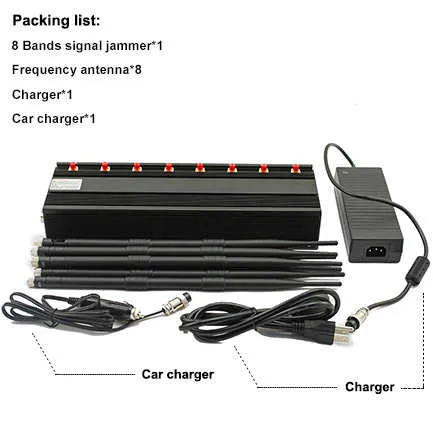道場TOP ネタ一覧 Cell phone jammers block some nasty signals道場
Schools have reached their limit with the perpetual attachment of students to their phones
- ◇評価 0ポイント
- ◇閲覧回数 353回
- ◇登録日
- 2023年12月21日
-
- perfectjammer
- 道場主
Lv.15
The pandemic-induced return of students to school brought about a noticeable alteration in their cellphone habits, as educators promptly realized. Their heightened reliance on these devices during class became more pronounced, with a surge in activities such as social media posting, YouTube searching, and texting friends.
So this year, schools in Ohio, Colorado, Maryland, Connecticut, Pennsylvania, Virginia, California and others banned the devices in class to curb student obsession, learning disruption, disciplinary incidents and mental health worries.
Superintendent Elizabeth Lolli of Dayton Public Schools firmly asserted, "We explicitly stated that this must stop. The academic issues we are grappling with cannot be resolved if our students persist in using their phones."

Cell Phone Signal Jammer For Schools
To discourage students from using their cell phones during instructional hours, schools sometimes employ cell phone signal jammers. The use of cell phones in classrooms can prove to be a major distraction, hampering students' focus and impeding their overall learning process.
Instead of using cell phone signal blocking device, many schools have implemented policies that restrict or prohibit the use of cell phones during class time. Some schools require students to keep their cell phones turned off and stored in their backpacks during class, while others provide cell phone storage lockers or charging stations.
Additionally, certain educational institutions have implemented technologies aimed at limiting or controlling the usage of cell phones within certain areas of the school. For example, Wi-Fi networks are utilized by some schools to block access to social media and other distracting websites.
Overall, although cell phone jamming may seem like an effective approach to prevent cell phone use in schools, it is crucial to handle this issue in a legal and responsible manner. Educational institutions should consider implementing policies and technologies that can limit or control cell phone use, without resorting to illegal and potentially hazardous methods such as cell phone signal jammers.
The Bad
Students tend to be highly susceptible to the kinds of distractions smartphones provide. My colleague caught a student watching Grey's Anatomy during her class. Other students tweet, text, and listen to music when they should be on task. According to Jeffrey Kuznekoff, who conducted a study on phone use by college students, "You're putting yourself at a disadvantage when you are actively engaged with your mobile device in class and not engaged in what's going on." Saraswathi Bellur, a researcher at the University of Connecticut, found that multitasking in class "is likely to harm academic performance."
The stakes are higher after the covid-19 years, with many districts behind academically up to a year or more and doing all they can to help students catch up. Some have come to see social media — accessed via students’ phones — as a major contributor to poor mental health. A string of school systems has filed suit against the platforms.
Parents have expressed contrasting views on this issue, with a significant number of critics arguing that their children require mobile phones for emergency situations.
“We’re not trying to infringe on anybody’s freedom, but we need to have full attention in the classroom,” said Nancy J. Hines, superintendent in the Penn Hills School District, in the suburbs of Pittsburgh.
Upon the resumption of face-to-face learning after the pandemic, Hines experienced an intensification of cellphone problems within their diverse 3,000-student system. In an effort to shift the focus from mindless scrolling to active engagement in the classroom, the district decided to enforce a ban in its middle school. Homeroom teachers took on the responsibility of collecting the students' cellphones each morning and securely locking them in zippered storage cases. The students were then able to retrieve their phones before leaving for home.
ブログ? そんなの必要ありません! 今日から、いきなりアフィリエイトスタート!
【まにあ道アフィリエイト】まにあ道ならAmazonアソシエイトIDを利用してネタを書くだけで、お気軽に始めていただけます。













 シュリのおすすめネタ
シュリのおすすめネタ
コメントはまだありません。